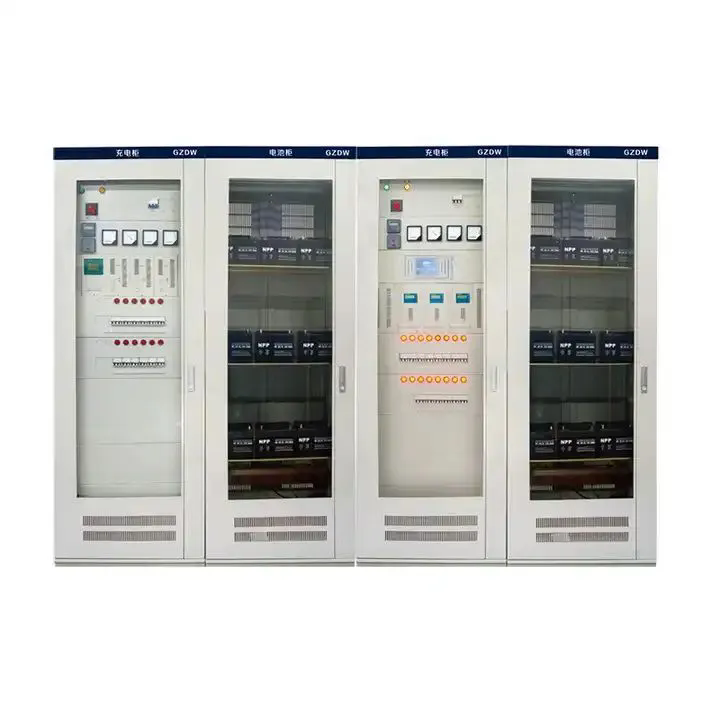Key Components of Low Voltage Switchgear
2024-08-14
Low Voltage Switchgear refers to an assembly of electrical devices used for the control, protection, and isolation of low-voltage electrical circuits (typically up to 1,000 volts AC). It is a crucial component in electrical distribution systems, ensuring the safe operation of electrical equipment and protecting circuits from faults such as short circuits, overloads, and ground faults.
Key Components of Low Voltage Switchgear:
1. Circuit Breakers:
- Function: Automatically interrupts the flow of electricity in the event of a fault such as an overload or short circuit, preventing damage to equipment and reducing the risk of fire.
- Types: Includes molded case circuit breakers (MCCBs), air circuit breakers (ACBs), and miniature circuit breakers (MCBs).
2. Switches:
- Function: Manually or automatically disconnects electrical circuits from the power supply for maintenance or in case of a fault.
- Types: Includes load break switches, isolators, and disconnect switches.
3. Fuses:
- Function: Provides overcurrent protection by melting and breaking the circuit when the current exceeds a predetermined level.
- Types: Includes high rupturing capacity (HRC) fuses and cartridge fuses.
4. Busbars:
- Function: Conducts electricity within the switchgear and distributes power to different circuits. Made of copper or aluminum, busbars are typically insulated and housed within the switchgear assembly.
5. Protection Relays:
- Function: Monitors electrical parameters like current and voltage, and triggers circuit breakers to open when a fault is detected. Relays provide additional protection features, such as differential protection, overcurrent protection, and ground fault protection.
6. Meters:
- Function: Measures and displays electrical parameters like voltage, current, power factor, and energy consumption. Essential for monitoring and managing the electrical system.
7. Control Devices:
- Function: Includes devices like contactors, timers, and push buttons that control the operation of electrical circuits. These devices can automate processes and improve the efficiency of the electrical system.
8. Enclosure:
- Function: The physical housing that protects all internal components from environmental factors like dust, moisture, and physical damage. Enclosures are typically made of metal and can be designed for indoor or outdoor use.
Functions and Operations:
1. Power Distribution:
- Low voltage switchgear distributes electrical power from the main supply to various circuits, ensuring that power is delivered safely and efficiently to different parts of a building or facility.
2. Fault Protection:
- It protects electrical circuits and equipment by isolating faulty sections of the network, preventing the spread of electrical faults and minimizing damage.
3. Control and Automation:
- Switchgear can be integrated with control systems to automate the operation of electrical circuits, such as starting and stopping motors, managing lighting, and controlling heating, ventilation, and air conditioning (HVAC) systems.
4. Metering and Monitoring:
- By integrating meters and monitoring devices, switchgear allows for continuous monitoring of electrical parameters, enabling real-time control, energy management, and fault diagnosis.
5. Isolation:
- Provides a means to safely disconnect circuits from the power supply for maintenance or emergency purposes, ensuring the safety of personnel and equipment.
Applications of Low Voltage Switchgear:
1. Industrial Facilities:
- Used to manage and protect electrical distribution in factories, processing plants, and other industrial environments. Ensures the safe operation of machinery and equipment.
2. Commercial Buildings:
- Installed in office buildings, shopping centers, and hospitals to distribute power to lighting, HVAC systems, elevators, and other critical infrastructure.
3. Residential Complexes:
- Ensures safe power distribution and protection in apartment buildings, housing complexes, and individual homes.
4. Data Centers:
- Critical for maintaining the uninterrupted operation of servers and IT infrastructure. Low voltage switchgear manages power distribution and ensures quick response to electrical faults.
5. Renewable Energy Systems:
- Used in solar power plants, wind farms, and other renewable energy installations to manage the connection between power generation and the grid.
Importance:
- Safety: Low voltage switchgear plays a crucial role in protecting people, equipment, and property from electrical hazards by isolating faults and preventing electrical fires.
- Reliability: It ensures the reliable operation of electrical systems by managing power distribution and protecting circuits from damage due to overloads or short circuits.
- Efficiency: By automating control and providing real-time monitoring, switchgear improves the efficiency of electrical systems, reducing downtime and maintenance costs.
- Compliance: Ensures that electrical installations comply with safety standards and regulations, which is essential for legal and insurance purposes.
Example of Usage:
- In a Manufacturing Plant: Low voltage switchgear is installed to manage the power distribution to various sections of the plant, including machinery, lighting, and HVAC systems. Circuit breakers protect the equipment from overloads, while relays monitor electrical parameters and provide protection against faults. The switchgear's control devices automate the start and stop operations of motors and other equipment, improving operational efficiency.
Low Voltage Switchgear is a vital component in electrical distribution systems, ensuring safe, reliable, and efficient power management in a wide range of applications, from residential buildings to industrial facilities.



